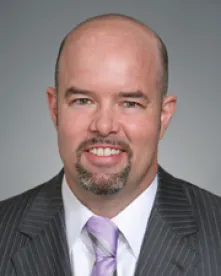In what is only the second final written decision of an inter partes review (IPR), the United States Patent and Trademark Office Patent Trial and Appeals Board (Board) cancelled all claims under review, finding for petitioner and delineating the requirements the Board will expect patent owners to meet when seeking to amend claims in future IPR proceedings. Idle Free Systems, Inc. v. Bergstrom, Inc., Case IPR2012-00027 (PTAB, Jan. 7, 2014).
The petitioner, Idle Free Systems, filed a petition for IPR of a patent owned by Bergstrom, which Bergstrom had asserted against Idle Free in a district court action. The invention relates to an automobile air conditioning system that operates at different speeds based on available power sources, which can include the running engine of the vehicle, its battery and other power sources such as an onboard generator or an electrical outlet. The invention allegedly automatically alters operation of the air conditioning system at different “capacities” or speeds, depending on available power source, thereby maximizing battery life.
The Board agreed with Idle Free on seven of nine grounds of review, and the IPR was instituted for all claims in the patent. At oral conference, Bergstrom conceded that claims 1-4, 8, 10, and 17-19 were unpatentable on the grounds instituted for those claims. On its own, and without having conferred with the Board beforehand as is required by 37 C.F.R. § 42.121(a), Bergstrom filed a Motion to Amend claims 17-19. The Board dismissed the Motion to Amend as not complying with § 42.121(a). However, the Board provided Bergstrom with another opportunity to amend its claims and advised Bergstrom as to which requirements were not met by the initial Motion to Amend. Bergstrom’s second Motion to Amend, however, was still deficient.
In the final decision, the Board explained the fatal shortcomings in Bergstrom’s second Motion to Amend. Because Bergstrom, as the patent owner, had the burden to show entitlement to its requested relief, that is, entry of the proposed substitute claims, it was required to demonstrate patentability of the proposed substitute claims, by a preponderance of the evidence, over the prior art in general and not just the prior art references applied by the petitioner against the original patent claims. Bergstrom remedied certain deficiencies of its initial motion to amend, including showing support in the specification for the newly proposed claims, as well as showing that limitations of the proposed claims were not taught or suggested by the Petitioner’s identified prior art. However, Bergstrom’s second motion was nevertheless inadequate because it did not set forth what Bergstrom knew about the level of ordinary skill in the art and what was previously known in the art, regarding each feature it relied upon for establishing patentability of its proposed substitute claims. The Board explained that for each such feature, if Bergstrom was not the first to have invented or developed it, Bergstrom should have revealed in its motion if such technical features existed in other contexts, and, if so, how they worked. If Bergstrom believed that it was the first to invent or develop a feature, it should have stated so in its motion. Unfortunately, Bergstrom did neither.
Practice Note: Petitioners may want to attack proposed claim amendments by emphasizing how proposed claims are not adequately framed with respect to the state of the art and skill set available to a person of ordinary skill in the art. Patent owners desiring to amend many claims in a patent may want to consider following the Board’s advice from its first decision dismissing Bergstrom’s initial attempt to amend its claims and file for either a reissue application or a request for ex parte reexamination of a patent, relying on the Board’s institution of an IPR as raising the required substantial new question of unpatentability.
IPR’s Are Time Barred by Pre-AIA Litigation
Addressing the one-year time-bar relating to petitions for inter partes review (IPR) of patents asserted in litigation, the U.S. Patent and Trademark Office Patent Trial and Appeals Board (Board) denied four IPR petitions as being time-barred, confirming that litigation commenced prior to the effective date of the America Invents Act (AIA) will trigger the one-year bar. Samsung Electronics Co. Ltd. v. Fractus, S.A., Case Nos. IPR2014-00008, -00011, -00012, and -00013 (PTAB, Jan. 2, 2014).
Petitioner, Samsung Electronics, filed petitions for IPR of four related patents. Samsung’s IPR petitions came five days before filing requests for ex parte review of the same patents and after previously having filed multiple requests for inter partes reexamination for each patent over a span of three years. The patents related to antennas with specific shapes that are repeated at different scales of size. These features are described in the patents as allowing such antennas to operate simultaneously at several frequencies, while at the same time allowing for a smaller size of antenna. Each of the four patents was asserted by Fractus against Samsung in 2013 litigation, which itself was a follow-on litigation to one that commenced in 2009 and is currently on appeal to the Federal Circuit. The 2009 litigation was started prior to enactment of the AIA.
Subsequent to filing its IPR petitions, Samsung argued to the Board that the time bar provided by 35 U.S.C. § 315(b) should not apply to its petitions for two reasons. First, each of the petitions was filed before the effective date of the AIA, and therefore the one-year time-bar did not apply. Second, even if barred by the first litigation, the petitions had been filed within one year of the second litigation. Samsung’s primary argument was that the statute’s phrase “is served” in § 315(b), being written in the present tense, precludes application of this particular AIA provision to past litigations that had been pending as of the effective date of the AIA. Samsung argued that “Congress would have used ‘was served’ if it intended complaints served before enactment of the America Invents Act also to trigger the one year deadline.”
The Board disagreed, noting the legislative history of § 315(b) clearly indicates that Congress intended IPRs to provide quick and cost-effective alternatives to litigation and that the statute was intended to set a deadline to prevent IPRs from being used as a tool for harassing patent owners by repeated litigation and administrative attacks.
The Board also noted that § 315(b) is not a statute that authorizes institution of an IPR within one-year of being served with a complaint for patent infringement, but rather one that bars institution of an IPR based on prior litigation asserting the patent in question. .
Practice Note: Because decisions by the Board not to institute an inter partes review are not appealable, (§ 314(d)), it appears that this will be the final word on the issue of time-bars based on pre-AIA litigation. The Board also made it clear that it will quickly dismiss IPR petitions filed after the one-year time-bar provided by § 315(b). Alleged infringers should docket and dutifully monitor that one-year IPR deadline. In situations where a party engaged in prior litigation may consider filing a petition for post-grant review, it should evaluate whether the asserted patent is a covered business method (CBM). Such proceedings do not have a time-bar. A time-barred defendant may also consider joining a third-party’s IPR utilizing the joinder provision of § 315(c), and complying with the relevant provisions of that statute.




 />i
/>i

